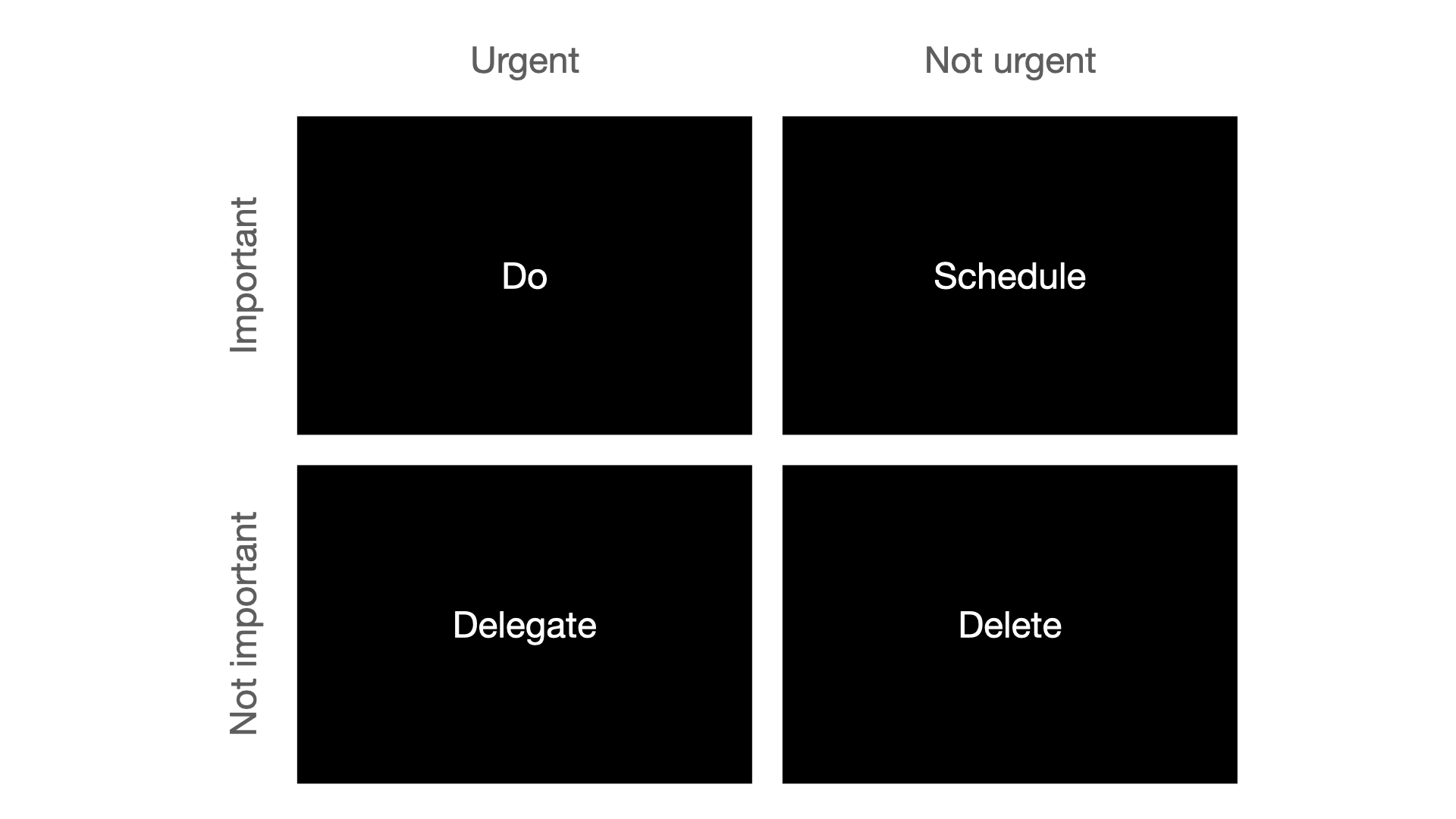Dealing with the urgent and important
That business idea you have been thinking of working on? It’s not urgent. It sure is important. So is the book you have been meaning to read, the sabbatical you’ve been planning to take, and the get-together you wanted with your school buddies.
People want to take care of the important stuff but the urgent stuff always gets in the way. You pick a book to read and your phone buzzes with social media notifications. You open the browser to book the flight tickets but then the client calls.
There are always meetings to attend, emails to respond to, bills to pay, groceries to be ordered, the list is endless…
You have to get urgent out of the way but important is also important 🤪.
How do you prioritize?
Welcome to Eisenhower Matrix.
It’s a tool you can use to prioritize your tasks based on urgency and importance.
This tool is named after Dwight Eisenhower, the 34th president of the United States and a productivity geek 😎.
Before we get into this framework, let’s differentiate the urgent and important tasks so we’re on the same page:
Urgent tasks are the ones you need to get over and done with asap. They are the ones with a ‘now’ deadline. The longer you delay, the more stressful it gets for you.
Important tasks don’t have a deadline, at least not an immediate one. But, you need to take care of these tasks to achieve your long-term goals. Timeless delays on the important stuff lead to guilt and frustration.
Getting back to the Eisenhower Matrix. It consists of Not important and Important on the side of the matrix, Urgent and Not urgent on the top of the matrix as follows:
The first step to using this matrix is to identify and place your tasks in the right quadrants.
e.g., Let’s say I’m fumbling with the following tasks:
Finish this very post and publish now!
Pack boxes to move houses in 10 days.
Start a personal side project.
Attend a status update meeting.
Let’s identify and place them in their right quadrants.
Quadrant 1: Urgent + Important — Finish this very post and publish now!
Quadrant 2: Not urgent + Important — Start a personal side project.
Quadrant 3: Not important + Urgent — Pack boxes to move houses in 10 days.
Quadrant 4: Not important + Not urgent — Attend a status update meeting.
The way to deal with each quadrant is as follows:
Quadrant 1: Urgent + Important — Do
These are the tasks that are both urgent and important. You need to take these up and do them yourself.
e.g., I’m finishing this post as we speak (write in my case) 😀
Quadrant 2: Not urgent + Important — Schedule
These are the tasks that are important but we tend to ignore them as there is no deadline looming on our heads. You don’t have to do them right away but schedule them or do them right away if your quadrant 1 tasks are accomplished.
Quadrant 3: Not important + Urgent — Delegate
These are the things that need to be done soon but they aren’t so important to you that they need your personal attention. You can delegate them to others or even automate them if possible.
In my case, we are moving houses in 10 days and we need to pack. I delegated my kids to pack a few boxes today and they did a fantastic job.
Quadrant 4: Not important + Not urgent — Delete
As you’d expect from this quadrant, your life and life of your loved ones are better off without them. Don’t think twice. Just hit delete.
You can use the Eisenhower framework on a micro or a macro level. You can plan your daily priorities or your monthly ones. It works just fine with short-term, mid-term, or long-term timelines.
“I have two kinds of problems, the urgent and the important. The urgent are not important, and the important are never urgent.” — Dwight Eisenhower
Happy prioritizing 🙌




